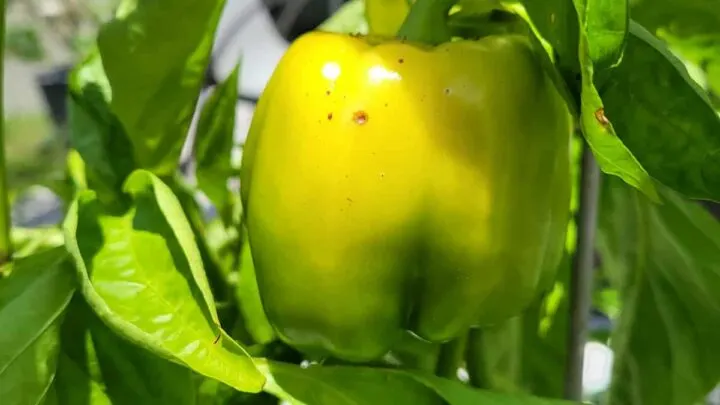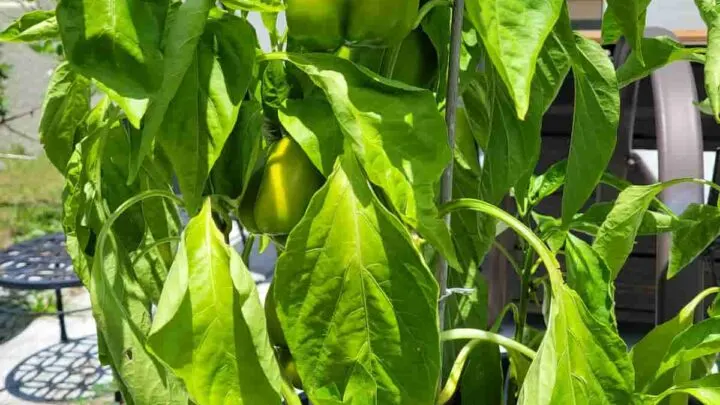When deciding where to plant certain crops and vegetables in your garden, it is important to know if they have thorns. No one likes to be poked or prodded by thorny bushes or plants, and growing them in areas where you may accidentally bump into them is no fun. To avoid this problem, it is important to know if any of the varieties of vegetable crops you are growing will develop thorns. If you want to plant peppers, you are probably wondering, do pepper plants have thorns?
Pepper plants do not have thorns. Even with a wide variety of peppers to choose from, almost all have the same care requirements and basic structures.
Whether you grow sweet, hot, bell, or jalapeño peppers, you are in for a long season of work from seed to harvest. Growing peppers is a long process, but with the right guidance, it can be easy, fun, and fruitful!

Sichuan Pepper Plants
Now, I just explained that no pepper plants have thorns. However, the plant on which the Sichuan pepper grows does have thorns. This is because Sichuan peppers are not true peppers. They are not even a part of the pepper family. Sichuan peppers are berries that grow on the prickly ash tree.
This tree is generally the size of a shrub and is known for its sharp, thorny, and woody branches and trunk. The prickly ash tree is part of the citrus family. Another interesting fact about Sichuan peppers is that we do not eat the seed but the berry’s outer part that grows later in the season.
The Sichuan pepper tree and its fruit have had a hard time coming to America. Because of the Citrus Canker’s fear, an infestation could knock out citrus plants and trees. America feared an infestation, and before 2005, there was a blanket ban on all imported citrus products.
Later, the ban was lifted, and today you can purchase and import Sichuan tree seeds. However, you cannot import seedlings, sprouted seeds, or mature plants. With the lifted ban, you can also import Sichuan peppers as long as they are dried and prepared properly.

You can grow prickly ash trees from seed in many areas throughout the United States. These trees grow quickly and can produce a large amount of Sichuan peppers. They will produce their berries in summer, and you can harvest them by gently shaking the tree to release the husks to the ground. It is best to lay a blanket or sheet under the tree.
Sichuan peppers are not spicy. Despite being used in many spicy dishes, this ingredient is used for its numbing ability. Creating a different sensation than a true pepper spice. When we think of Sichuan sauce or flavors in Chinese cooking, we are almost always thinking of the red chili that creates a spicy and rich flavor in the dish. Often, the Sichuan pepper is used in cooking alongside other stronger and spicier chilies.
What Hot Peppers Can I Grow in my Garden?
Looking for another way to add some heat to your next dish? Growing hot peppers is a great way to add color and flavor to your garden and your dinner plate. But choosing which hot peppers to grow depends on your spice tolerance and your space. Growing a variety of spicy options allows you to explore different cuisines and impress your spice-loving friends. Below, find a list of hot peppers you can grow from least spicy to alarm-ringing spice!
- In the ”not too spicy” category of peppers are jalapenos, poblanos, pepperoncini, shishitos, cascabel, and cubanelles. These peppers are great for eating raw. Throw them in salads, salsas, or sandwiches, or enjoy them on their own.
- Stuffing these peppers with cheese or other delicious fillings is a delicious way to bring the heat and keep it in the yellow instead of full-blown red. Enjoy a poblano pepper charred on the grill, then stuffed with Mexican rice for a yummy meal fresh from the garden bursting with summer flavor!

- Next, we have the medium spice level category. Ancho, Serrano, Hungarian wax, hot lemon, cayenne, and tabasco peppers offer another heat level without being too much to handle. Take your salsas up a notch with one of these spicier pepper options. Make a delicious crema with ancho or Serrano peppers mixed in. Try your hand at making your own Tabasco sauce with fresh tabasco peppers. Taco night with peppers fresh from your garden will be the fiesta everyone is talking about!
- We are about to discuss the spiciest pepper options to grow in your garden for the brave-hearted and tongues of steel individuals. Carolina Reaper, Scotch bonnets, ghost peppers, habaneros, and Thai chili peppers will round out the top of the spice list. Grow Scotch Bonnets and enjoy fresh and fabulous Jerk Chicken or other Jamaican dishes.
- Thai chili peppers are used in all sorts of Asian cooking. Try your hand at a spicy Pad Khee Mow noodle dish from Thailand, or enjoy a traditional Indian Dal with the addition of authentic Thai chili peppers.
- A little goes a long way when it comes to these spicy peppers! Not only are these peppers spicy, but they are also brightly colored and make a beautiful addition to your garden. So even if you won’t be eating them, growing them for their color is another option!

Hi there, my name is Allie and welcome to my blog; GareningWithAllie!
Much of what you see written here is just our personal experiences with gardening. Along with the content I write here, there is also a unique collection of gardening topics covered by some of our close friends. I hope you find everything you read here to be helpful, informative, and something that can make your gardening journey the most lovely experience ever! With that said, Happy Gardening!
